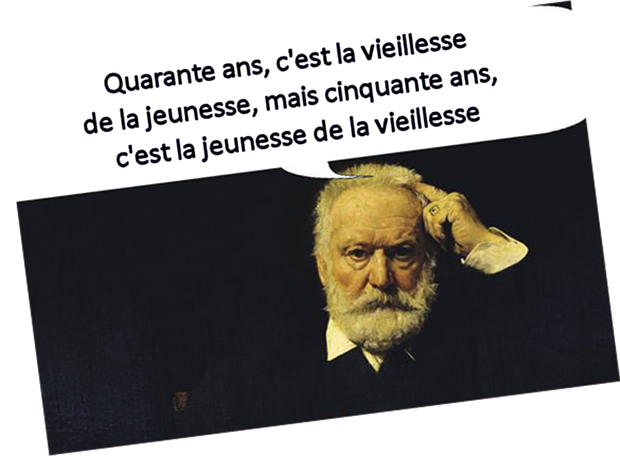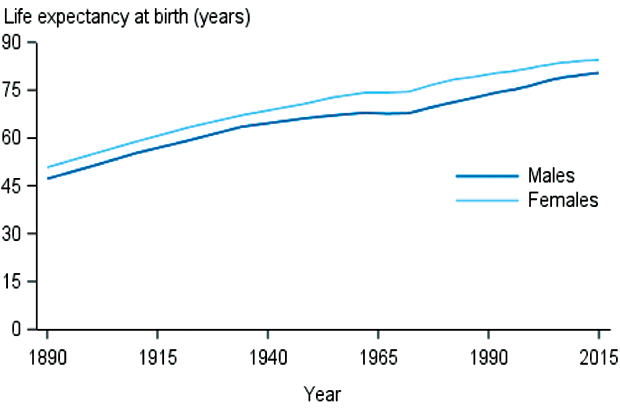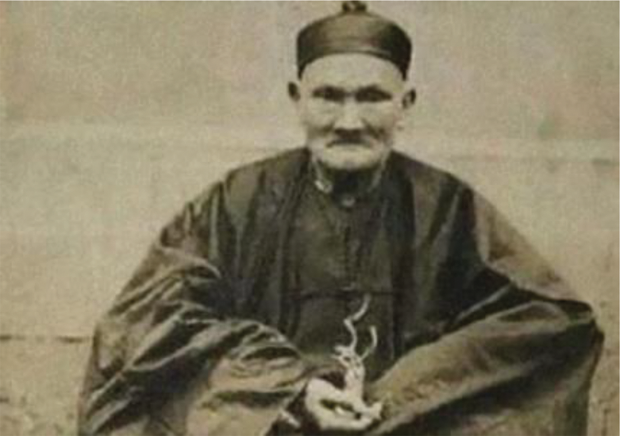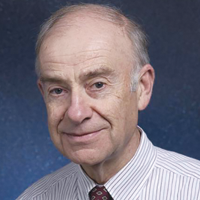
Perceptions
- Quarante ans, c’est la vieillesse de la jeunesse, mais cinquante ans, c’est la jeunesse de la vieillesse.
- Forty is the old age of youth, while fifty is the youth of old age.
- Vierzig ist das höhe Alter der Jugend, während fünfzig ist die Jugend des Alters.
- Quaranta è la vecchiaia della giovinezza, mentre cinquanta è la gioventù di vecchiaia.
- Los cuarenta son vejez para la juventud, y los cincuenta se sienten como juventud para la vejez.
—Victor Marie Hugo (1802–1885)
Rubén Darío (1867–1916), born in Nicaragua, was called Príncipe de las Letras Españolas (Prince of the Spanish Literature). Among his many poems, one is titled “Juventud, Divino Tesoro” (“Youth, Divine Treasure”). Taking it up as a starting line, the present essay suggests a similar name on the other end of the way, and a good reference recalls the elixir of life, sometimes equated with the philosopher’s stone, as an ancient and mythical potion that supposedly granted the drinker eternal life and/or eternal youth. Alchemists in various ages and cultures sought it, and blood, at a given moment of history, appeared as a good candidate, which up to a point and looking from our current knowledge is relatively true; after all, many patients have practically been resurrected following a transfusion [1]. The literature is not devoid, either, of some representative pieces (tales or novels), as for example that produced by Honoré de Balzac (1799–1850) titled The Elixir of Life, but there are other interesting examples.
Aging (or ageing) is the process of becoming older. In a narrow sense, the term refers to biological aging of human beings, animals, and other organisms. In a broader sense, aging can refer to single cells within an organism (cellular senescence) or to the population of a species (population aging). In humans, aging represents the accumulation of changes over time, including physical, psychological, and social modifications. Along with more knowledge and wisdom, aging is among the greatest known risk factors. Apoptosis, in turn, is a form of programmed cellular death or cellular suicide, as if the cell becomes a useless organ and it is better to dispose of it. Do we become useless people? What a nasty thought to even say!

Some people, for example, rumple, or get more wrinkles than others do. Biology may be the reason why women are more prone than men to developing wrinkles around the lips. Perhaps, it is because women’s skin tissues around the mouth contain fewer sweat and sebaceous glands than men, and also because that area in women has fewer blood vessels (Figure 1).
Can Aging Be Extended, or is it a Question of Attitude?
The aging process appears nowadays as a pressing, even urgent problem from the medical- sanitary, social, economic, and political viewpoints. It shows multiple edges. However, the motivation here stems in that dictum given by the Spanish philosopher José Ortega y Gasset ( 1883–1955): Yo soy yo y mi circunstancia ( “I am me and my circumstance,” or perhaps better translated as “me and my circumstance”).
There are different kinds of old people: young elders or senior people or third age guys (65–75), old people or the fourth age group (75–85), and old–very old (above 85). The words senile or geront sound too harsh, and we might better keep the term elderly people as kinder terms. Anyhow, the classification is relative, even arbitrary, barely hiding a euphemistic undertone. Much nicer appears that common saying often heard: Carrying years does not mean to be old, it rather means that we have not stopped to enjoy life. Another way of expressing the same says Age is a gift showing what you have lived. A dear old professor and mentor of mine told me once almost at the end of his life: Worn out, my boy, but not rusty!
From a biological perspective, there is aging when a gradual and intrinsic change of the organism takes place, change that leads to growing vulnerability risk, loss of vigor, disease, and eventual death. Such process occurs from the cellular, organ and full organism level along the full vital period of any adult living being. In other more philosophical plain words, aging is the tax or levy paid to death so that it stays somehow distant.
Someone said that no one gets old simply by living a given number of years. One becomes old giving ideals up. Years rumple the skin, but the loss of enthusiasm withers the soul. Despair, fear, self-doubt, constant inner uncertainty, and worries are the true factors that depress the spirit and make bowing the head. We get old when the new brings us awe, when we stop struggling. Technology in its growingly fast production of newer and supposedly better models of cell phones, computers, and the like may be a partial culprit [2].
A Few Time Limits
We reach old age after having surpassed, say roughly, the great meridian of 40, a time when spiritual evolution tends to halt, and from that point on, it develops until its final shape—call it character, type, or guts—that at last will become fixed and unalterable. Life Begins at Forty, by Walter B. Pitkin, was a book written in 1932 during a time of rapid increase in life expectancy, when such expectancy was around 60 and climbing fast. It was the first bestselling nonfiction book in the U.S. in 1933. The situation has changed dramatically and for the better in the elapsed 86 years or so, not only in the U.S., but in Europe and in many Latin American countries. Other places, unfortunately, show a quite different opposite picture.
Life can be understood looking back, but only can be lived looking ahead. Lucrecio (full name, Tito Lucrecio Caro, Rome, 94–53 aC (ante Christum, or before Christ), stated that nobody receives life as an absolute property because it is only given to us for temporal use, as a lease. Not uncommonly, popular country philosophy expresses a similar concept, as for example the lyrics of a Northwestern Argentine chacarera (folkloric NW musical style with a peculiar appealing and pungent rhythm) that says La vida me han prestao y tengo que devolverla cuando el Creador me llame para la entrega (“Life was lent to me, and I have to return it when the Creator calls me to do it”).
Long before Lucrecio, Plato (427–347 aC), in Athens, maintained that old age is a resting condition or state of feeling freedom, and the way we lived marked our aging process. Besides, and do not forget: The present does not really exist, because as soon as it is, it becomes it was; as a consequence, we had better make good use of such spark of time if we aim at reaching inner freedom. No doubt, all these thoughts and views are deep and certainly contain a lot of truth.

Many of us feel more or less confident believing there is another life well beyond, even though we are rather unsure about the level we might be placed on, and despite all this probable soft final accommodation, we still cling with nails and teeth to this earthly risky life. The thing is that, crossing the third or fourth age, hopes become stronger on making them last longer and longer, as much as possible, if possible enjoying an acceptable quality level. Man has always dreamt of longevity, and those particularly come from the Jewish-Christian creed. It felt more promising, for those prophets apparently had life spans of 800 or 900 years, and still bearing children! In a sense and relatively, longevity exists, although its length is by far more modest than the biblical lives. Longevity is hereditary and linked to some not yet too well-defined ethnic characteristics, geographical sites, and probably nutritional standards, too (Figure 2, right. Old Pakistani woman. Notice similar wrinkles, as described before, on both sides encompassing bilaterally nose and mouth.).
The Hunza Valley, Peshawar, Pakistan, has documented cases of very old-age persons, also in Abkhasia, the Caucasian mountains of Southern Russia, or in Ogimi, Japan. In Vilcabamba, Ecuador, a nice small town located at 1,500 m asl, in 1971, out of a total population of 819, the town boasted seven men and two women older than 100 years. One person said he was 123, and another claimed to be 142 years old (Figure 2, above). Largely, these places are located in mountainous regions where the human diet is mainly composed of legumes, fruits, and little meat, which usually comes from goats.
Longevity looks like a long avenue measured beyond our best expectations, that is, its final is the so-called life expectancy, a technical statistical modern term originated in the old actuarial tables [3]. That avenue becomes shorter when people stop too often at those shops offering salty and fatty foods, and when they fall prey to stress and various toxins.
Life Expectancy

Life expectancy is fully different in its meaning from life expectations, which refers to what we want out of life and who we want to become. The former is a statistical measure of how long a person may live, based on the year of birth, current age, and other demographic factors including sex. At a given age, life expectancy is the average number of years a person is likely to live. In 2010, the world average was 67.2 years (Figure 3).
Global life expectancy at birth in 2015 was 71.4 years (73.8 years for females and 69.1 years for males), ranging from 60.0 years in Africa to 76.8 years in Europe, giving a ratio of 1.3 between the two regions. Women live longer than men all around the world. The gap in life expectancy between the sexes was 4.5 years in 1990 and had remained almost the same by 2015 (4.6).
These dramatic figures demonstrate big differences and enormous difficulties several countries are facing. Nonetheless, it is not merely a question of a longer life exclusively in number of years, but in terms of quality, that is, good health (the best possible) and in terms of enjoyment (whatever its definition may be, even though it is a highly debatable subject).
Above, we already mentioned places and cases of very long lives. There are others, even perhaps fantasies or curiosities, but worth mentioning:
- Thomas Parr (1483–1635) was an Englishman who apparently lived for 152 years. He is often referred to simply as Old Parr. His tomb lays in Westminster Abby, by those of Shakespeare, Bacon, and Milton. There is a well-known whiskey named after him.
- Li Ching-Yuen (Figure 4), who passed away on 6 May 1933, was a Chinese herbalist, known for his supposed extreme longevity. He claimed to have been born in 1736. His true date of birth was never determined, and his claims have been dismissed by gerontologists as a myth.
- Edna Parker was born in 1893 on a farm in Indiana; she grew up eating a typical farm diet of meat and starch, attended Franklin High School, and took classes at Franklin College to obtain a teaching certificate. Parker taught at a two-room schoolhouse for several years, until she married her next-door neighbor. As of April 2008, she had 5 grandchildren, 13 great- grandchildren and 13 great-great-grandchildren. Therefore, this is a well-documented case that reached at least 115 years [4].

The history of science and medicine describes outstanding names that stubbornly searched for the preservation of youth. Charles-Édouard Brown-Séquard (1817–1894), noted 19th century physiologist, injected himself with canine testicular extract in an attempt of rejuvenation. Later on, Serge Abrahamovitch Voronoff (1866–1951), of Russian origin, gained fame (and money, too) during the 1920s and 1930s for his technique of grafting monkey testicle tissue onto the testicles of men aiming at the same rejuvenation objective. However, he went from being highly respected to becoming a subject of ridicule. Closer in time, Paul Niehans ( 1882–1971), a famous Swiss doctor who treated several celebrities— such as Pope Pius XII (1876–1958), the writer William Somerset Maugham (1874–1965), and the influential politician Winston Churchill ( 1874–1965)— proposed the injection of macerated sheep fetus, also involved in that slithering search and so anticipating the current cellular transplants. Ana Aslan (1897–1988), a Romanian and controverted physician, pioneered in geriatrics and gerontology. She used procaine as a significant drug in the slowing down of the aging process and designed for it several treatments. Linus Carl Pauling ( 1901–1994), an American biochemist and political activist who received the Chemistry and the Peace Nobel Prizes, championed the use of vitamins, especially vitamin C, the elimination of tobacco, and moderate ingestion of sugar. Precisely, and as honoring his advices, caloric restrictions have become popular in recent years as a means to prolong life.
Many world personalities have shown longevity almost with full activity. Pablo Picasso ( 1881–1973) died at 92. Charlie Chaplin ( 1889–1977), after several marriages, married for the last time when 54 and had a son at 73. Leopold Stokowski ( 1882–1977) still conducted symphonic orchestras at 95. Bertrand Russell (1872–1970), a British philosopher, mathematician, historian, writer, and political activist, kept going on up to being 98. Sarah and Bessie Delany published in 1994 their book The Delany Sisters’ First 100 Years. Bessie passed away at 104, and Sarah did at 109, having published a second book two years before. Arthur Rubinstein (1887–1982), a Polish-American pianist, played in public giving concerts for over eight decades. We could look for more similar examples, perhaps adding that, besides the advices listed before, intellectual or artistic activities may help a lot in that search of youth. Kirk Douglas, a well- known and highly successful American movie actor, was 102 (as of January 2018) and carrying out with his wife innumerable donations for education and charity.
The Long-Life Industry
Yes, there is a multimillionaire industry sucking money from the pockets of those who at least want to look younger or less old. SPAs (from salus per aquam, Latin for “health through water”), miraculous diets, facial stretching, botulin injections, wigs, hair implants, dyes, liposuction, massages, exercises in gymnasiums or in parks, jogging and trekking, mountain bike, yoga … you name it, all associated with fashion dresses, always trying to look young or youthful. Unfortunately, not all these procedures may be right or advisable. Occasionally they may be even harmful, in the short or sometimes in the long term, as experience often has shown.
What has science to say about longevity?

Andrzej Bartke, professor and director of Geriatric Research, Department of Physiology, Southern Illinois University (SIU), School of Medicine, (Figure 5, right) pointed out not long ago that the combination of genetic engineering plus some nutritional restrictions can lengthen the life span of the laboratory rat in about 70%. Besides, alteration of some genes may also prolong life expectancy in nematodes, which goes from 31 to 199 days, that is, a 6.4-fold increase. Translated to the human scale, it would uplift it to about 500 years! Almost a real Methuselah, the man reported to have lived the longest, who died at the age of 969, according to the Hebrew Scriptures. Not bad!
Experiments with proteins (telomerases), which catalyze telomeres transformations as some sort of vital clocks, are constitutive elements placed at the chromosomal ends; they diminish their length in the successive cell divisions. If by means of genetic engineering the primitive telomeres dimensions were to be preserved, it would be possible to keep the adult stage without aging signs. Moreover, if telomeres wearing out could be prevented, the way to longer survival would be opened. Not only an attempt to stop those clocks might be a way, but also trying to tick them backwards would be another.
There are attractive studies about the small particle low-density lipoproteins (LDL) phenotype carried by the Ashkenazi Jews, an ethnic group of extended and proved longevity. A study carried out at the Albert Einstein College of Medicine examined a particular genetic trait that increases the lifespan of the Ashkenazi population. The study focuses on telomerase, the enzyme responsible for maintaining telomeres at the ends of chromosomes during cell division. Everything seems to aim at preventing telomeres wear and tear, and at somehow avoiding apoptosis, too [5].
A new term, totipotency, not clearly defined, would refer to the maximum cellular capacity to drive the overall development of an organism, adding that results so far are promising when one thinks of damaged organ function reconstruction, such as infarcted heart, Parkinson’s disease, or senile dementia. Perhaps those born from 2025 on might enjoy a life expectancy of over 130 years, assert some biologists, anticipating that the Homo sapiens would be replaced by the Homo longevus, obviously leading to a new life perception.
The apparently true possibility outlined above is not devoid of drawbacks because living longer may mean a costly dependency as disabilities will continue, cities will be overpopulated, the bad will also live longer, prisons and hospitals will be crammed, and food will not be enough. How many murderers, tyrants, and dictators will reach the 130–140 marks? How many great artists, poets, scientists, and above all, good working honest people will surpass the 100 mark?
The average world population growth rate is currently 1.7%, but for people above 65 that rate goes up to 2.5%, and the old–very old sector increases rather fast, too. Between 1960 and 1980, the U.S. population increased 26%, and the old sector showed an amazing 126%. Estimations for 2030 predict that 22% Americans will be old persons. By and large, at least the more or less advanced countries seem to enter into what has been named aging societies, where the percentage of people over 65 surpasses 7%. In Latin America, the ranking in this respect is led by Cuba, Uruguay, and Argentina, in this order, all three with percentages above 10%.
A decrease in birthrate, increase in life expectancy, and improvements in the health condition usually accompany this phenomenon—good news for the individual, and bad news for the society. On top of that, developed and developing countries’ number of inhabitants reaching the retirement age grows faster than the productive sector, clearly representing another economic overload, besides those already mentioned.
Such demographic enormous changes have socioeconomic, medical, and ethical aspects impossible to ignore; their consequences are and will be highly significant, and several groups all over the world are analyzing the situation in the search for intelligent policies, as for example, possible reinsertion of the old in the labor market. Questions to consider are the following:
- Should procedures like coronary bypass, renal dialysis, and others, which skyrocket medical costs, even with demonstrated benefits, be controlled, say, applying the TRIAGE1 concept?
- Should politicians consider the advantages–disadvantages balance of compulsive retirement, a regrettable fact that suddenly places the subject on the margin, even knowing that many of the candidates are intellectually able as much as the young?
No human being, weakened by age or by disease, is useless and becomes a load for society, said John Paul II. We, members of society, irrespective of religious creeds, undoubtedly and strongly endorse it, too, in pursuing the ideal of a Divine Old Age.
Acknowledgments
Many of the concepts developed in this article were inspired by Dr. Fernando de la Serna ( 1933–2018), a cardiologist and old friend of this author, who added several changes spicing up the text. Fernando was the second to obtain the MD degree at the then still young Medical School ( created in 1949) of the University of Tucumán (UNT, created in 1914).
References
- M. E. Valentinuzzi, “Anticoagulants: An essential transfusion component—How they came about,” IEEE Pulse Mag., vol. 2, no. 2, pp. 45–50, Mar.–Apr. 2011.
- M. E. Valentinuzzi, “Technological acceleration: A few musings. A short break to think over: To be free or not to be free?” IEEE Pulse Mag., vol. 6, no. 6, p. 39, Nov.–Dec. 2015.
- M. E. Valentinuzzi et al., “Cardiac risk assessment: When and who?” IEEE Pulse, vol. 4, no. 4, pp. 38–48, Jul.–Aug. 2013.
- Edna Parker. [Online].
- J. M. W. Slack, Essential Developmental Biology, 1st and 2nd eds., Malden, MA, USA; Carlton, VIC, Australia: Blackwell, 2001, 2006.


